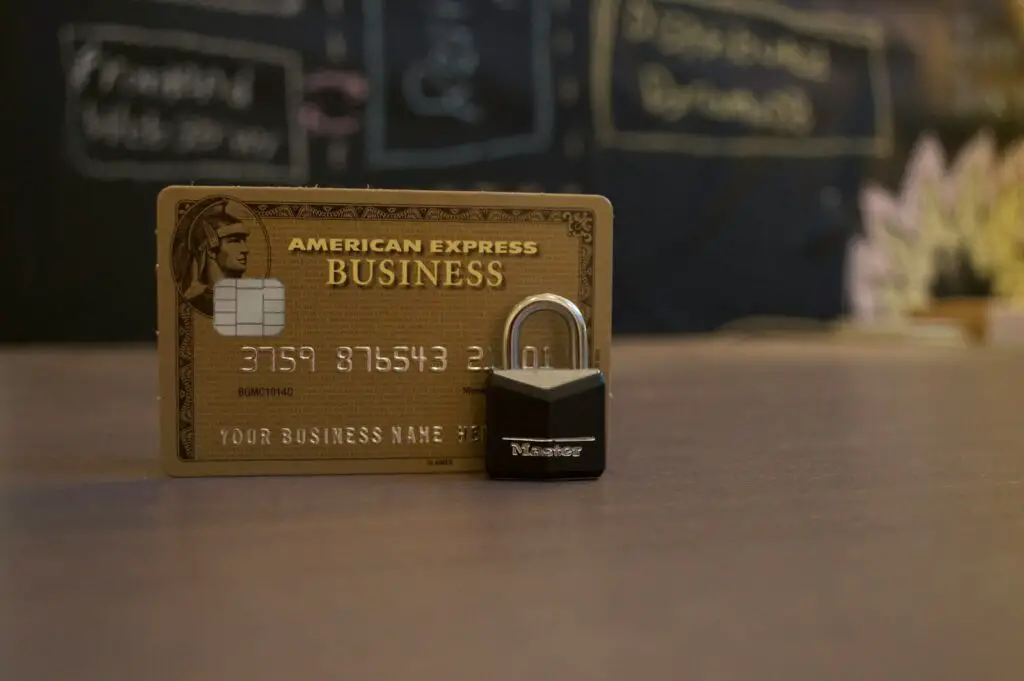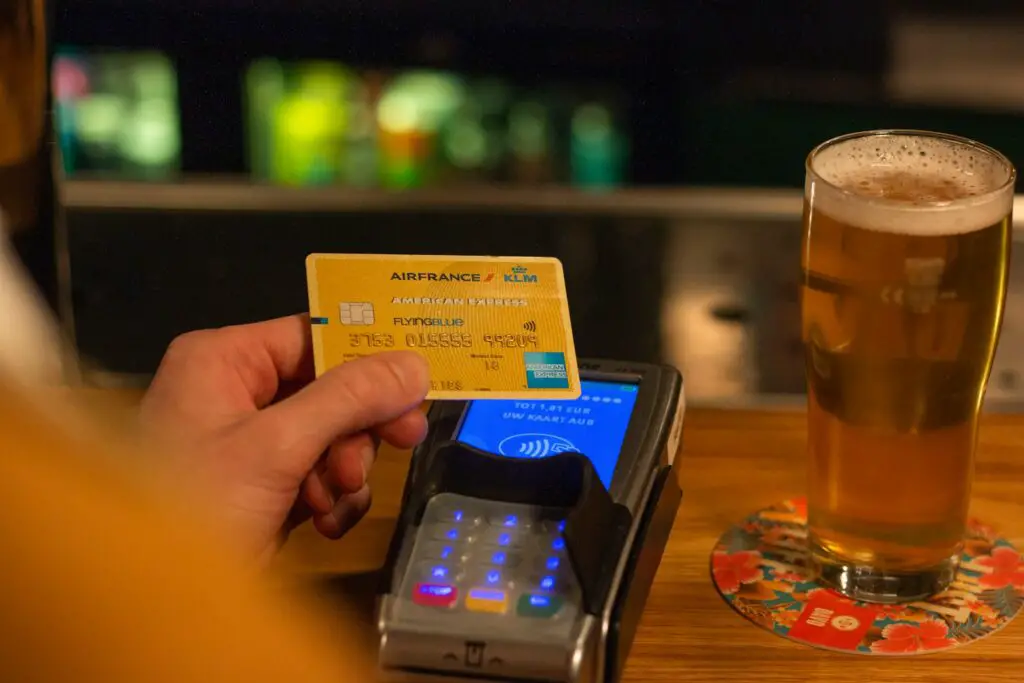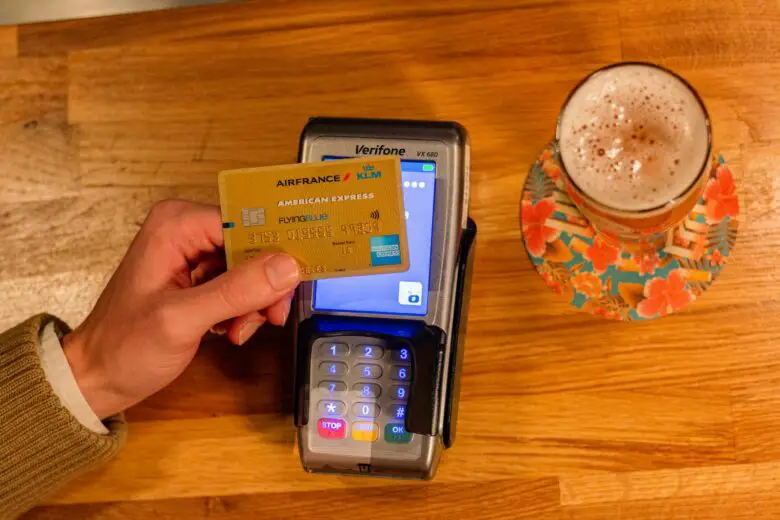Did you know that the date you pay your credit card bill could affect your financial health? Credit cards are a fixture in modern-day spending, yet managing them wisely requires strategy and understanding. Knowing when to make payments isn’t just about avoiding late fees. It can influence credit scores, interest accumulation, and overall financial well-being. This article delves into the nuanced world of credit card payments. It explores the intricacies of billing cycles, offers tips for choosing the best payment date, and suggests strategies to maximize your finances. Join us on a financial journey that might save you more than just a few dollars monthly.
The Importance of Understanding Credit Card Payments
Navigating the financial responsibilities of owning a credit card involves more than just swiping for purchases—it means understanding the ins and outs of credit card payments. Being adept with this knowledge is crucial for maintaining a healthy financial status and avoiding the pitfalls that can accompany credit card debt.
Credit card payments are not just mandatory financial obligations but also opportunities to build a positive credit history. The best time to pay your credit card balances can significantly influence your credit scores. Making timely payments ensures that your credit card balance remains manageable and does not inflate with additional fees or high-interest charges. Furthermore, understanding your billing cycle, grace period, and the effects of credit card utilization on your credit report are vital aspects of managing your payments effectively.
Maintaining a low credit utilization ratio—how much of your credit limit you’re using—is beneficial for your credit health. Keeping this ratio under 30% is recommended to positively impact your credit scores. Likewise, paying down balances each month contributes to a favorable payment history, a leading factor credit bureaus consider when determining your creditworthiness.
In essence, pinpointing the best time to pay your credit card is more than just a date on the calendar; it’s a strategic financial decision that can set the tone for your overall monetary wellness.
What are credit card payments?
Credit card payments are monetary transfers made to a credit card company to pay off or reduce the outstanding balance that a cardholder owes. For each billing cycle, the credit card company will issue a statement outlining all transactions, fees, and the total amount owed, known as the ‘statement balance.’ The payment will often include the following:
- Principal payments toward the amount spent.
- Interest accrued on any balances carried over from previous months.
- Possible additional fees for balance transfers, cash advances, or late payments.
The card issuer typically requires a minimum payment by a month’s due date. However, paying only the minimum can extend the time to pay off the balance and increase the total interest paid. Properly managing credit card payments involves making payments larger than the minimum, ideally paying off the entire balance to avoid interest charges.
Why is it important to pay your credit card on time?
Paying your credit card on time is imperative for several reasons:
- Credit Score Preservation: Late payments can result in negative marks on credit reports, which can lower credit scores. Consistently paying on time accounts for a significant portion of your credit score calculation.
- Avoidance of Late Fees: Besides damaging credit scores, late payments can incur hefty late fees, increasing the debt owed.
- Reduction of Interest Charges: You can avoid additional interest on your purchases by paying your balance in full every month during the grace period.
- Credit Utilization Control: Regular payments and keeping your balance low give you better control over your credit utilization ratio, which can positively affect your credit.
- Positive Payment History: A consistent record of on-time payments builds a positive payment history, enhancing your credit eligibility for future loans or increases.
Aim for a payment strategy that suits your financial situation while adhering to the credit card company’s guidelines to maximize these benefits. Whether you make multiple payments throughout a billing cycle or set up automatic payments to ensure you never miss a due date, choosing the best time to pay your credit card is a cornerstone of savvy financial management.

Understanding Credit Card Billing Cycles
A credit card billing cycle is the period between the last statement closing date and the next. During this time, your credit card issuer tracks and tallies all transactions to create your monthly statement, reflecting your new balance, any fees incurred, and the minimum payment due. Understanding this cycle is essential as it can inform when the best time is to make credit card payments, save on interest, and help manage your budget more effectively.
What is a credit card billing cycle?
A credit card billing cycle is a set time period during which purchases, cash advances, balance transfers, fees, and any other charges are posted to your account. The end of the billing cycle is marked by the generation of your credit card statement, which details the charges for that cycle.
How long is a credit card billing cycle?
The length of a credit card billing cycle typically ranges from about 28 to 31 days, depending on the card issuer. This time frame is federally mandated to be consistent; however, the actual number of days can vary slightly from month to month and by issuer.
What happens during a credit card billing cycle?
During a credit card billing cycle, the following activities occur:
- Transactions: All purchases, balance transfers, cash advances, and other transactions are recorded.
- Interest: If you carry a balance from the previous month, interest may accrue daily.
- Fees: Any applicable fees, such as annual fees, late fees, or foreign transaction fees, are added to your balance.
- Statements: At the end of the billing cycle, your credit card company summarizes the period’s activity. This includes your previous balance, new charges, any fees or interest, the total new balance, the minimum payment due, and the payment due date.
- Grace Period: A grace period might be offered during which no interest is charged on new purchases if the full balance is paid by the due date.
- Payments: Payments made during the billing cycle are applied to your balance.
- Credit Reporting: Your balance and payment information are typically reported to the credit bureaus at the end of each billing cycle.
Tracking and understanding your billing cycle is important to avoid late payments and manage your credit utilization rate, which can, in turn, impact your credit scores. Knowing this cycle allows you to time payments to ensure that your reported balance is low when the issuer reports to the credit bureaus, thus optimizing your credit utilization and potentially improving your credit score. Therefore, while the best time to pay credit card balances might vary by individual financial circumstances, aligning payments with your billing cycle and statement due date is a financially savvy strategy.
Determining the Best Time to Pay Your Credit Card
The optimal time to pay your credit card can hinge on several elements directly impacting your financial well-being. By assessing your financial habits, understanding the specifics of your credit card terms, and recognizing how your payment timing affects your credit score, you can pinpoint the most advantageous moment to handle your credit card payment.
Factors to Consider When Choosing a Payment Date
- Grace Period Advantages: Identify the length of your card’s grace period—a window post-statement during which you incur no interest on new purchases. Make full payments within this timeframe to avoid extra charges.
- Reporting Dates: Check when your card issuer reports to the bureaus. Pay your balance before this date to ensure a lower credit utilization rate appears on your credit report.
- Budgeting Cycles: Align payments with your personal cash flow. If your paycheck arrives bi-weekly, schedule payments accordingly to prevent cash crunches.
- Interest Accrual: Understand if your card accrues interest daily. If so, reducing your balance earlier could save on interest costs.
- Multiple Payments: Instead of a single monthly payment, consider bi-weekly payments to consistently lower your running balance, which may decrease interest and improve credit utilization rates.
- Credit Utilization: Aim to keep your utilization below 30%. Early payments that reduce your balance can help maintain a favorable utilization ratio.
- Payment Due Date: Never miss the minimum payment by the due date to avoid late fees and damage to your credit score.
- Financial Goals: Whether aiming to reduce debt or boost your credit score, tailor the timing of your payments to support these objectives.
| Factor | How It Impacts Payment Timing | Consideration |
|---|---|---|
| Grace Period | Encourages full payment before it ends | Pay in full during this period to dodge interest on purchases |
| Reporting Date | Can optimize credit score | Pay down the balance before this date to display lower credit utilization |
| Interest Accrual | Impacts total payable amount | Earlier payments can lead to less interest accumulation |
| Credit Utilization | Affects credit score | Frequent, early payments can help maintain a lower utilization rate |
| Payment Due Date | Avoids penalties | The absolute latest payment should be made to avoid late fees and credit score impacts |
By considering these factors, you can establish a payment schedule that will keep you in good standing with your credit card company and maximize your financial health.

Strategies for Maximizing Your Finances
When managing finances, precision can be as influential as your broader strategies. Timely credit card payments, among other practices, simplify financial management and have profound implications for savings and credit health. Being strategic about the best time to pay your credit card is crucial:
- Consistency: Develop a reliable payment routine, ensuring you always have funds for your credit card bills.
- Automated Payments: Set up automatic payments for at least the minimum amount due to avoid missed deadlines.
- Monitoring: Regularly check account statements and set reminders for payment dates to keep on track.
- Finesse Balance Transfers: If you’re considering a balance transfer, do so to pay lower interest and be mindful of any fees involved.
Paying Your Credit Card in Full Each Month
Paying off your credit card statement in full each month is a financial cornerstone. This discipline reaps several benefits:
- Avoid Interest: Eliminate the added expense of interest charges.
- Credit Score Enhancement: A consistent history of full, on-time payments can positively impact your credit score.
- Budget Adherence: Regularly clearing your balance encourages living within your means and keeping your spending in check.
These financial habits contribute to a robust fiscal profile, ensuring you’re viewed favorably by creditors and financial institutions.
Utilizing Grace Periods to Avoid Interest Charges
Many credit cards offer a grace period between the end of your billing cycle and the payment due date when interest does not accrue on new purchases. Harness these grace periods effectively:
- Purchase Timing: Plan larger purchases right after the billing cycle starts to maximize the interest-free window.
- Payment Scheduling: Pay the full balance before the grace period ends to capitalize on the interest-free benefit.
Effectively using the grace period can feel like an interest-free short-term loan, keeping costs down as you manage your credit card use.
Maximizing Credit Card Rewards and Benefits
Credit cards often come packed with rewards and benefits, and savvy users can exploit these perks:
- Rewards Programs: If your credit card offers rewards, maximize points, miles, or cashback by using your card for daily purchases.
- Bonus Categories: Identify and leverage bonus categories where your card offers additional rewards.
- Perks Utilization: Take advantage of perks like travel insurance, extended warranties, and exclusive discounts.
Remember to weigh the rewards against potential interest charges — the former should outweigh the latter to benefit from your card’s offerings truly.
Managing Credit Card Debt
Managing credit card debt requires understanding the implications of carrying a balance and making informed decisions to tackle the debt effectively. The starting point is to acknowledge the role credit card debt plays in your overall financial health. The objective is to reduce balances, maintain a low credit utilization rate, and avoid the high-interest costs that can quickly escalate the amounts owed.
Understanding credit card debt and minimum payments
Credit card debt is the unpaid balance one carries from month to month. It often comes at a high cost due to compounding interest rates associated with most credit cards. Minimum payments are the lowest amount you can pay by the due date to keep the account in good standing. While making minimum payments prevents late fees and penalties, it only slightly decreases the principal balance, leading to prolonged debt and substantial interest charges.
It is vital to be aware of the following facts:
- Credit Utilization: Maintaining a low credit card balance relative to your credit limit is key to a healthy credit score.
- Long-term Costs: Paying only the minimum can result in paying multiple times the original amount due to interest.
- Credit Score Impact: Regularly carrying a high balance can negatively affect your credit score as it indicates a higher lending risk.
Strategies for paying off credit card debt
Here are actionable steps for tackling credit card debt:
- Higher than Minimum: Pay more than the minimum to reduce the principal balance faster and save on interest.
- Extra Payments: If possible, make additional payments mid-cycle to lower the daily balance and interest.
- Debt Snowball Method: First, focus on paying off the smallest debt while maintaining minimum payments on other cards, then move on to the next smallest.
- Debt Avalanche Method: Prioritize debts with the highest interest rates, which will save the most money over time.
In a bid to manage your credit card payments effectively, consider this:
| Strategy | Description | Expected Outcome |
|---|---|---|
| Pay More Than Minimum | Exceed minimum payments. | Less interest, quicker payoff. |
| Extra Payments | Make mid-cycle payments. | Lower daily balance and interest. |
| Debt Snowball | Motivation boosts through quick wins. | Motivation boost through quick wins. |
| Debt Avalanche | Eliminate the smallest debts first. | Greater long-term savings. |
Using balance transfers to consolidate debt
Balance transfers involve moving high-interest credit card debt to a card with a lower interest rate, often a promotional 0% APR for a set period. This can be a strategic move to reduce interest costs and simplify monthly payments. However, there are important considerations:
- Balance Transfer Fees: Most cards charge a fee for the transfer, typically 3-5% of the total transferred amount.
- Introductory Period: Track the low or 0% interest introductory period, as rates will hike after it ends.
- Credit Impact: Initiating a balance transfer can affect your credit score due to inquiries and changes in credit utilization.
- Payment Discipline: Ensure you maintain payments on the new card; otherwise, the transfer will be useless.
A balance transfer can provide breathing space to focus on repaying principal debt without mounting interest but requires discipline and understanding your credit card terms.
Regular Monitoring of Credit Card Statements and Credit Reports
Regular monitoring of credit card statements is a fundamental aspect of responsible financial management. Setting aside time each month, ideally before your payment due date, is crucial to scrutinize your credit card statements. Doing so can help you detect unauthorized charges and billing errors and keep you abreast of your current balance and expenses.
Importance of Reviewing Credit Card Statements
Reviewing your credit card statements monthly serves several purposes:
- Detect Inaccuracies: Spot any mistakes in billing or fraudulent transactions.
- Track Spending: Keep tabs on your purchases to ensure they align with your financial goals and budget.
- Stay Informed: Be aware of any changes to interest rates, fees, or the credit limit that might affect your payments or available credit.
In this context, knowing the best time to pay your credit card is before the statement due date to avoid late fees and interest charges. Aim to pay the full statement balance to reduce credit utilization and improve your credit score.
Understanding Credit Utilization Ratio and Credit Reports
The credit utilization ratio, a critical factor in determining your credit score, is the percentage of your available credit that you’re currently using. A high ratio can signal to lenders that you’re overextending yourself financially. It’s generally recommended to keep this ratio below 30%.
| Credit Utilization Aspect | Description | Impact on Credit Score |
|---|---|---|
| High Ratio (>30%) | Indicates potential financial strain | Negative |
| Low Ratio (<30%) | Reflects good credit management | Positive |
| 0% Ratio | Shows no credit usage (can be positive or negative) | Neutral/Positive |
Reviewing your credit reports from the major credit bureaus can highlight how the reported utilization ratio affects your score. Guard against errors by ensuring all information, including credit limits and balances, is accurate.
Monitoring for Errors and Fraudulent Activity
Staying vigilant through regularly checking your credit reports and card statements can expose any discrepancies or fraudulent activities early on. You should:
- Report Errors: If you find anything amiss, report it immediately to the credit card issuer.
- Update Personal Information: Keep your contact details current to ensure you receive all creditor notifications.
- Review Charges: Look for transactions you do not recognize and investigate them. Fraudulent activity can sometimes start with small amounts.
By being proactive in monitoring your financial statements, you’re protecting your credit score and your financial security. It’s important to dispute any unauthorized charges or inconsistencies immediately. Remember that your vigilance is a key defense against identity theft and credit card fraud.
Best Time to Pay Credit Card Frequently Asked Questions (FAQs)
What happens if I pay my credit card bill after the due date?
If you pay your credit card bill after the due date, you may be subject to late fees and potentially higher interest rates. Late payments can also hurt your credit score, making it harder for you to obtain credit in the future.
Should I pay off my credit card balance in full every month?
If you can afford to do so, paying off your credit card balance in full every month is generally recommended. This will avoid accruing interest charges and maintain a healthy credit utilization ratio, positively impacting your credit score.
How often should I check my credit card statement for accuracy?
It is a good practice to check your credit card statements regularly, at least once a month. This allows you to identify any unauthorized charges, errors, or fraudulent activity and address them promptly with your credit card issuer.
Can I set up automatic payments for my credit card bills?
Many credit card issuers offer the option to set up automatic payments for your credit card bills. This can help ensure you never miss a payment and avoid late fees. However, it’s important to regularly monitor your statements to ensure accuracy and to have sufficient funds in your bank account to cover the payments.
What options do I have for making payments on my credit card bill?
You can pay your credit card bill through various methods, including online banking, mobile apps, phone payments, mail-in payments, and in-person at a bank branch. Choose the most convenient method for you and allow you to make timely payments.
How can I lower my credit utilization ratio to improve my credit score?
You can either pay down your credit card balances or request a credit limit increase to lower your credit utilization ratio. Aim to keep your credit utilization below 30% to maintain a healthy ratio and improve your credit score.
What are the consequences of missing a credit card payment?
Missing a credit card payment can result in late fees and increased interest rates and negatively impact your credit score. It may also lead to restrictions on your credit account or potential legal action by the credit card issuer.
Is paying my credit card bill early to avoid interest charges better?
If your credit card has a grace period, paying your credit card bill early can help you avoid interest charges. However, if your card does not have a grace period or you carry a balance, interest may still accrue from the statement date until the payment is received.
How does making only the minimum payment affect my credit score?
Making only the minimum payment on your credit card can result in higher interest charges and a longer time to pay off your balance. It may also negatively affect your credit score as it can indicate a higher level of debt and financial instability.















Leave a Reply